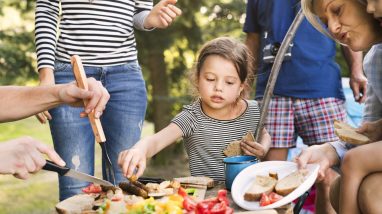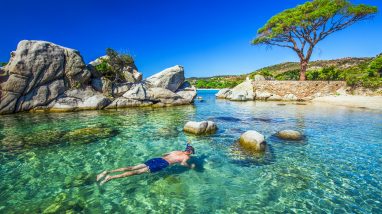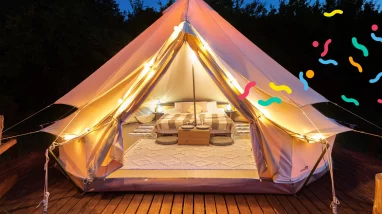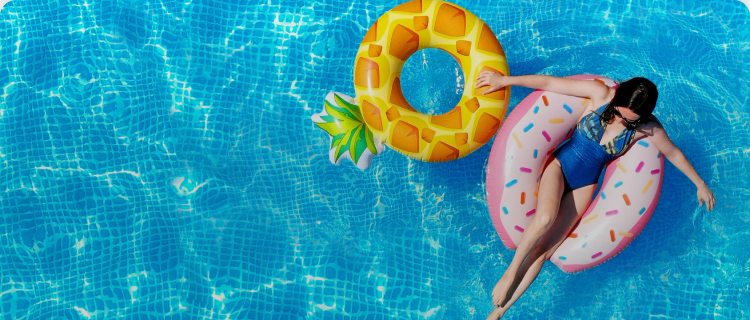Basic factors and pointers to consider for your camping holiday
One of the most important factors to consider when planning a memorable camping holiday is food. What’s considered ideal camping food will vary from person to person, but it’s a good idea to stick to simple meals that are easy to prepare on the road, or those that can be purchased ready-to-eat. Of course, the length of your trip and the makeup of your travelling party will also need to be considered when determining your camping food list. If your plans involve fun-filled family adventures like hiking, water sports or ice adventures, you’ll definitely need high-energy nutrition to keep you going and snacks for refueling on your daily adventures. Where and how you set up your camp will also factor into what sort of foodstuff you should pack for the journey. Campervans, mobile homes or other accommodation options with cold storage and cooking facilities are infinitely more flexible in terms of food options than a tent, but tenting it has the benefit of forcing you to really get back to basics, which is a good thing now and again!
When all is said and done, there are some food essentials every successful camping trip can’t do without. And even if you pack all the right quantities and varieties of food, things can get awkward if you lack the proper equipment for cooking or preparing your meals. So, once you figure out where you’re going and in which season of the year, deciding what sort of meals to consume and what you’ll need to prepare and/or cook them once you get there will be easier.
Create your camping food checklist in quick easy steps
Unless you’re backpacking or bikepacking, where storage space is limited, consider including as many as possible of the following, for comfort and convenience.
Cooking equipment
It all starts with a grill or portable stove for cooking your food. MSR stoves or hybrid stove-fuel combos and portable water treatment systems are a perfect fit for backpackers in tents or vans. A stainless-steel pot and kettle should be included, with sizes to match the number of persons in your camping party. If you’re renting accommodation, most of these things may be provided, but probably not a barbecue, which you may want to bring, and possibly not your favourite sort of coffee machine.
Other essentials
Tin foil, spatula, ladle, scissors, vegetable peeler, tin opener, sharp knife, cutting board, lunchboxes for storing leftovers, oven gloves, sturdy plastic plates and bowls, hot pad and a couple of camping lighters completes the list of basics for preparing your meals. Even in rental accommodation on campsites, not all of these will be provided, so it’s no harm to bring your own.
Food consumption
Plastic bowls, plates and cups are ideal items to serve food during camping trips due to their weight, and the fact that you can reuse them as often as needed. Plastic cups with handles are easier for handling hot liquids and can be used for cold ones too. Even if you’ll have most of your meals on the terrace of your mobile home, you may want to picnic or use the communal barbecue area for a meal or two and these will come in handy then.
Food Storage: waste not, want not
The best way to deal with leftover camping food is to store it in reusable containers (like Tupperware or lunch boxes) with lids with effective seals to keep out ants and insects and avoid spillages when carried in rucksacks etc.
Coolers
These are good for keeping drinks cool and storing leftovers until the next day. Sizes vary for individual and vehicular transport.
Respect your environment: cleaning-up
Never forget to include a cleaning kit when compiling your cooking checklist. Keeping surfaces clean and disinfected will help protect against funny tummies and avoid vermin and local wildlife coming to check out your kitchen area. Of course the same goes for bagging up, sealing and ideally disposing of any rubbish quickly. Make sure to bring a roll of binbags, as if you cannot dispose of rubbish immediately and it will be near your accommodation until you can find a bin, double-bagging is a good idea.
Cleaning products
There are biodegradable solvents and sanitising wet wipes that are safe for the environment, which can be used for all your pots, pans and dishes as well as hands and faces. Always leave your pitch or accommodation as you found it.
Extras that make the difference
A fire extinguisher is a good thing to have in your car or van – whether you’re indoors or out, it’s the fastest way to put out a fire without wasting your water resources. Another great idea (especially for backpackers) is a folding shovel, which can be used to dig holes and bury organic food refuse or for pitching tents. A couple of plastic tablecloths can be put to a multitude of uses, especially in the event of rain, in addition to protecting your camp table.
Camping food ideas and hacks
Now that you’ve got some idea of what you’ll need for cooking and serving, let’s talk about the meals themselves.
Camping food for a delicious breakfast
Bacon and eggs on the grill or burritos are delicious breakfast or brunch meals for everyone, regardless of the time of day. Whole grain cereals in bar form or served with UHT milk are nutritious and easy. Hummus with pita or dried fruits with nuts are healthy additions to the breakfast table, providing protein, carbs and energy for outdoor activities. Include a plastic jar of Nutella or peanut butter with some rice cakes or toasts, for energy for the youngsters.
Lunch ideas for camping
A great lunch after a morning of activities helps recharge the batteries, so hearty choices should be made. If you’ve packed a barbecue, then burgers and sausages are a no-brainer the entire family will love. Pasta dishes like mac and cheese or spaghetti bolognese are tasty alternatives, while soups and DIY pittas or wraps with lots of salad and cheese components are often acceptable options for picky eaters.
Alfresco dining for campsite holidays
If there’s one meal to be eaten around a campfire it’s dinner, when campfire hotdogs, burgers and beans are all-time favourites. Chilli with rice, kebabs and tacos also make for great camping dinners.
Suitable snacks for in-between meals
Including the right snacks with your food for camping is an absolute must. Energy bars, fruit and trail mix are popular options for healthy snacks and you can alternate these with crisps, dips and biscuits/cookies to keep the mood and the energy at just the right levels in-between lunch and dinner. Marshmallows are mandatory campsite treats, especially if you plan on a building a campfire.
There’s always room for dessert
Gathering with family or friends under the stars to enjoy dessert is the perfect way to end each day. Pre-packed cakes or tarts are handy here or, if you have an oven, you could bring cake or brownie mix that can be quickly made with just a bowl and spoon to work with. Grilled apples or even bananas filled with chocolate are also tasty alternatives.
Getting the most benefit from your camping checklist
Planning a camping food checklist is no different from anything else and requires thought and consideration, so here are a few questions and answers that might help.
Is a campfire better for cooking than a portable stove?
A campfire is synonymous with camping food and is a lovely experience, but whether it is practical depends on location and environment. Portable stoves are handy to have as a back-up and may simply be more practical. Campervans, chalets and other indoor accommodation options provide superior equipment that you don’t have to carry, which may be worth considering if you are planning on cooking food at every meal.
Which type of fuel is best for a portable stove?
Refined petroleum products such as gasoline and kerosene can give off fumes, which may be harmful if inhaled by children and are not environmentally friendly. Comparatively, butane or propane are cleaner sources of fuel, lighter which makes them easier to transport and burn much more efficiently, so consider either of these fuels to power your portable stove when cooking camping food.
Is using metalware or plastic products better for camping food?
Both are ideally suited so it really comes down to personal choice, though many agree that metal products are the better performing and more durable. You can always have plasticware for the younger kids and save the metalware for the teens and adults.
How much food should I bring when camping?
The amount of food for camping is entirely dependent on number of individuals and number of meals to be served daily. Location and season are important factors since people tend to eat more in the winter than summer and also ease of resupply near your campsite. As a rule of thumb, always pack more long-life food than you think you need, because you never really know.
Should I pack canned foods and bottles when camping?
Canned foods and glass bottles can be heavy and bulky, but tinned food does have the advantage of keeping well. Boxed milk and juices will reduce your load.














